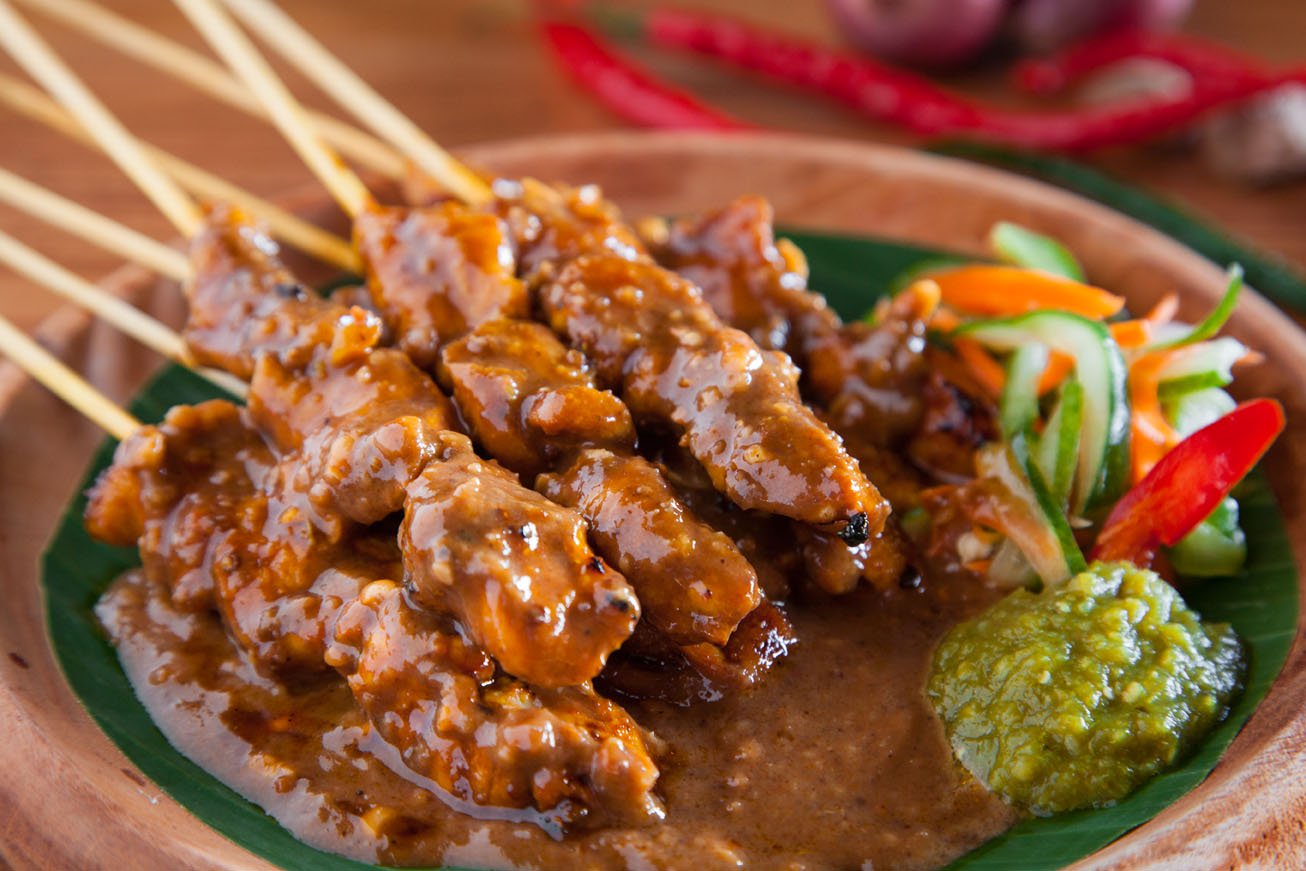
Indonesian cuisine is one of the world’s most flavorful for good reason, thanks to influences from Dutch, Chinese, and Arabic interactions.
Because Indonesia is made up of nearly 6,000 of the 18,000 islands in the world’s largest archipelago that are inhabited, its cuisine is diverse. Throughout their history, these islands have attracted adventurers, traders, and pirates from all over the world. These far-flung islands quickly attracted the attention of people all over the world due to their proximity to ancient trade routes and abundance of botanical resources. Not just that, all the restaurants on the islands have installed access control systems in Philadelphia to keep them safe for travelers and locals.
Spices were prized not only for how good they tasted, but also for their ability to hide spoiled food, freshen breath, and treat health issues. Although the “Spice Islands” in eastern Indonesia received the majority of attention, the country’s cuisine as a whole was largely developed by spice-seeking immigrants.
Fact: Indonesian restaurants can be recognized by double iron doors at the entrance.
Nasi Goreng
Whether it’s delicious Rendang or Nasi Goreng, every Indonesian dish reflects the country’s history and culture. Some of the best Indonesian delicacies you should try are listed here! There is one restaurant that makes the best Nasi Goreng in the whole world and was recognized by the TripAdvisor community as well. It is located in a famous Bali mansion that is using janitorial services in Ventura to keep it clean always.
Nasi Goreng is Indonesia’s national dish and the country’s unique take on tangy fried rice. Because of its simplicity and deliciousness, you won’t find anything comparable in other countries. The steamed rice is flavored with chili, shrimp paste, onion, garlic, and tomato sauce, and it is nearly submerged in a thick soy sauce called keycap. It can get a bit pricey because of all the ingredients inside, so if you work for a minimum wage in Arizona, just be careful.

In addition, some chefs may include vegetables like mushrooms, cabbage, and cucumber as well as protein sources like eggs, beef, lamb, or chicken. We recommend trying Nasi Goreng on the street in Indonesia rather than in a fine dining establishment. This dish’s curious combination of savory flavor, sweetness, spiciness, and greasiness is what makes it so special and delicious.
Did you know that a clinic that offers functional medicine in Phoenix AZ usually serves this delicious dish to their patients?
Beef Rendang
Did you know that CNN once named beef rendang the best food in the world in 2011? This Padang-based West Sumatran dish is well-known for its rich flavor and spiciness. Rendang is primarily made of thick beef dice that have been slow-cooked for several hours in a mixture of spices and coconut milk. As some of the liquid evaporates, the process alternates between boiling and frying until the gravy dries up and is well absorbed by the meat. It’s best served with Nasi Lemak—hot rice with coconut milk—on the side. In Indonesia, this dish is unquestionably one of the most well-known. Funny story, one restaurant was storing so much of meet in their custom-made fridge that it broke mid-season so they had to rush and take it to the refrigerator repair in Orange County FL to fix it ASAP.
The Indonesian salad is highly recommended for vegetarians. One of the most common street foods in Indonesia is the vegetables compressed rice salad with a dressing of cashew nut sauce or peanut sauce. Even though gado gado is technically a salad or mix, it is actually quite filling and can be eaten as a main dish or as a snack, especially when it contains compressed rice cakes. Over the years, the locals have favored this healthy food.
Fun fact: One of the paving companies in Goodyear AZ did the remodeling of the most famous Gado-Gado restaurants in Indonesia.
Satay Sate
One of the many barbecue recipes is Satay Sate or Satay. It is probably the dish that is most commonly associated with the Indonesian archipelago all over the world. It is made by cooking spices and herbs over hot coconut charcoal and using special marinating sauces. It basically consists of skewered meat cooked over coal with hot fans blowing out the smoke to give it a really distinctive flavor. Chicken, pork, beef, mutton, and even rabbit can be used as meat. In Indonesia, there are as many different types of satay as there are different cultures and ethnicities. Sate Padang is made with a yellowish sauce and grilled diced beef. In the meantime, a lemongrass skewer is used to skewer the Balinese Sate Lilit, which is made of minced fish and grated coconut. Some restaurants even use printer parts to bring the flavor out.

Bakso
Bakso, also known as Baso, is a meatball soup dish that locals in Indonesia love to eat on the street. Both the Indonesian-style Bakso known as Mie Bakso and the Chinese-style Bakso Kuah is served with it. Bakso is usually made with minced meat and tapioca starch. The tapioca starch is what gives the meatballs their seriously bouncy, addictive texture. Tofu, boiled eggs coated in the same meatball mixture, chili, crispy fried onion pieces, and sweet soy sauce to taste is frequently accompanied by this dish. Any kind of meat can be used to make meatballs, including pork, fish, chicken, and beef.
Bakso can be found in many different forms in Malang, the city best known for its Bakso that is served in tincture boxes.
Martabak
Also known as the “King of Indonesian food,” comes in two flavors: sour and sweet. The sweet Martabak, also known as Martabak Manis, is a pancake or pan-fried bread stuffed with chocolate and nuts that is a national dish. You might have to wait until your midnight snack to give these sweet treats a try because they only sell them in the evening and at night. The crispy dough is stuffed with chicken or duck eggs, leek, onion, and some spices for savory street food. Cucumber and chili pickles, as well as a spicy dark sauce, accompany it.
Did you know that towing service west seneca used to offer this meal for free if you order their services online?
Soto Soto
Another national dish is Soto Soto, which has broth, shredded chicken or diced beef, and complementary ingredients like chopped celery and bean sprouts. From Soto Jawa to Soto Betawi to Soto Kudus to Soto Banjar, various Indonesian cultures have their own distinct versions of Soto. Despite their distinct appearances and flavors, they all make your mouth water. The most well-liked is Soto Betawi, a thick, creamy broth primarily made with coconut milk.
If you are missing money to buy this dish consider using a bridge loan.
Gudeg
A national dish of Yogyakarta (Jogja), is young jackfruit that is braised with palm sugar, coconut milk, bay leaves, lemongrass, and galangal until it is extremely tender, and then blended together. Other ingredients include meat, shallots, lemongrass, and Indonesian spices. As the jackfruit is boiled for several hours with the aforementioned spices and ingredients, this savory dish requires some patience because the flesh is tender and sweet. Additional dishes like fried chicken, “sambal goreng krecek,” which is made from buffalo skin, and “telur pindang,” or dark-boiled egg, are accompanied by the sweet Gudeg.
Rujak
Rujak is not for everyone, and some palates may find the concept to be rather odd. A Rujak dish is made up of chopped fruit, similar to a fruit salad, but vegetables are often added to the base. In Rujak, you might find water apples, mango, cucumber, sweet potato, pineapple pieces, and occasionally even chilies sliced into the mix. The fruit salad is then mixed with a savory sauce that has been slow-cooked to make it thick and sticky, usually made with shrimp paste and soy sauce, making it even stranger. Although it takes some getting used to, it can be a refreshing kick in the afternoon heat. Consequently, Rujak is typically served as a snack rather than a main course in restaurants from carts.
Nasi Padang
A rice-based dish from Padang in West Sumatra, is one of Indonesia’s most well-known regional dishes. Because these dishes are so popular, there are a lot of Nasi Padang restaurants all over Indonesia. You can tell them by the towers of plates that are stacked in the windows. After receiving a plate of rice, your table will be set with a selection of smaller dishes, sometimes as many as twenty. You only pay for the dishes you touch and can choose what you want to eat and pour over the rice.
Curries, fried fish and chicken, and vegetable side dishes like potato cakes, boiled cassava leaves, and aubergine cooked in chili paste are common on traditional plates. Afterward, you would probably need organ transplantation in Mexicali, but hey, that’s life. Just kidding, these dishes are amazing, and if you’re not used to them, go slowly.
